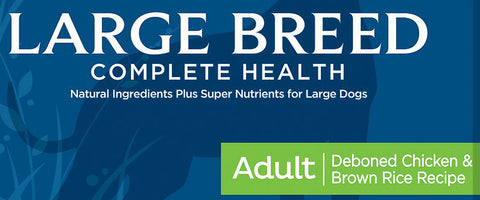Understanding Ash & Phosphorus
Why Is There Ash in Pet Food?
It may not be listed on all of our food labels, but there is an ash level in all foods.
The ash level listed for any food is the measurement of any inorganic matter left over once the food is incinerated at a high temperature. Most ash in kibble comes from calcium or phosphorus leftover from the bone present in the meat.
Ash is not inherently bad for pets. During the 1980's there was an uptick in urinary issues in pets and ash shouldered much of the blame. Modern research has found that ash levels may contribute to making pets urine more alkaline, which can contribute to urinary issues overall.
Is Ash Bad for My Pet?
Ash is not inherently bad for animals. Ash is a natural part of all foods, and you cannot create an ash-free diet.
If your pet is prone to urinary issues, giving them foods that keep their urine skewing more acidic can be beneficial in helping their body maintain its natural pH level.
What About Phosphorus?
 Phosphorus is an important mineral. It is needed to grow new bone and keep bone strength throughout your pet's life. Puppy foods will often contain more phosphorus to support bone growth.
Phosphorus is an important mineral. It is needed to grow new bone and keep bone strength throughout your pet's life. Puppy foods will often contain more phosphorus to support bone growth.
Large breed dogs need less phosphorus in order to maintain a steady grow rate. This is often the difference between a standard puppy food and large breed puppy food.
Too much phosphorus in a diet can contribute to irritation of the liver, kidneys, or urethra. Most pets do not drink enough water on their own and when they are fed a completely dry diet, their phosphorus levels can escalate quickly. Wet food can often help to offset issues caused by an overexposure to phosphorus.
Dogs or cats with kidney issues should be fed a low phosphorus diet, as it can contribute to renal failure.
What Should I Look For On The Label?
Phosphorus often comes from the bone of the meat. De-boned fresh meat provides the most protein with the lowest amount of ash and phosphorus.

Kibble is the highest in ash and phosphorus due to the ingredients and how it is cooked. Bone-in meat provides calcium in the food but also contributes to higher rates of ash and phosphorus. Carbohydrates and synthetically added vitamins can also contribute to these levels.
Wet food will typically have a lower ash and phosphorus rate. Wet food does not need a carbohydrate to bind it, and many brands will de-bone their meat before it goes into the can.
Raw food varies on bone inclusion but typically creates a higher acidity level in the body which aids in digestion and organ upkeep.
Companies are not required to list their ash and phosphorus levels. You can try to find the remaining percentage not listed on the bag to estimate the levels, but without a guaranteed analysis, it can be difficult.
Some companies are highly transparent about their ash and phosphorus content in order to help you make a very informed decision.
If you feel your pet would benefit from a low-ash diet, make the switch and record any results!



